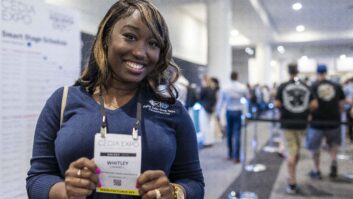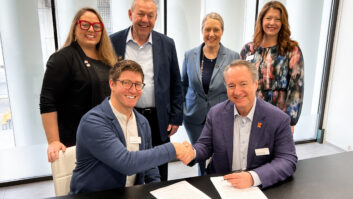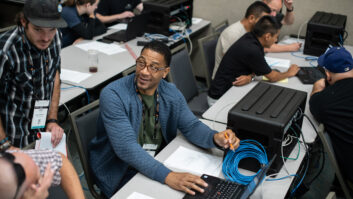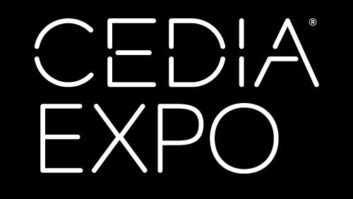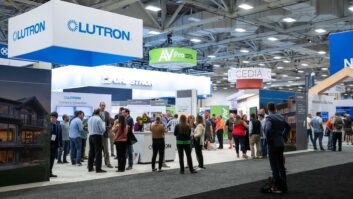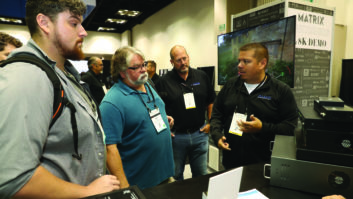It’s been two long years since the last CEDIA Expo. CEDIA’s interim co-CEO, Giles Sutton, and senior director of strategic partnerships, Ian Bryant, share their thoughts on how the industry has transformed under pressure and how attendees will see those changes reflected in this year’s CEDIA Expo.

How has the home technology landscape transformed since the last in-person show?
GILES SUTTON: Customers are spending a great deal more time at home, which is changing the character of the technology they’re bringing into that space. It has also changed their perception of that technology and of the custom integration industry. Though we serve many luxury clients, our industry’s services are not a luxury, but a necessity. Reliability, interoperability, even elegance: they all become critically important when the customer is using smart home systems day in and out for work, learning, and leisure.
As devices proliferate within people’s homes, taking on ever more central roles in their lives, they need sophisticated network design, integration and control, monitoring and management, and ongoing support. As the “essential critical infrastructure worker” designation granted to integrators in March of last year demonstrates, the profile of the industry has risen. The public understands what we do and its importance better than ever before.
IAN BRYANT: Supporting work from home — our “new normal” — has become very important to the CI channel. A huge percentage of office workers plan to continue to work from home, either on a hybrid or full-time basis. The technology needed to make their virtual presence professional is key.
Since the pandemic, consumers have also focused on their entertainment spaces. Home cinemas, a category that was once on the decline, are now ramping back up. People are looking for new ways to create compelling immersive entertainment experiences at home.

How do you anticipate we’ll see these changes reflected at this year’s CEDIA Expo?
BRYANT: In terms of technology, I expect to see some new categories making headway even as home cinema and home entertainment continue their resurgence. Lighting systems and lighting products, for instance, are bound to make a big statement this year; tunable, human-centric lighting is getting closer to mass adoption within the consumer market.
I also think infrastructure and networking will be hot topics. With so many more devices connected to the home network, including AV devices using the LAN for real-time media distribution, there will be a lot of focus on network requirements for all connected devices, network design and management education, and switches and routers that are optimized for the smart home.
SUTTON: The demographics will be different this year, too. In years past, integrators would often bring their whole team to CEDIA Expo, essentially putting their businesses on hold for the once-a-year opportunity to network, learn, and bond. Most firms can’t afford to pause their operations right now, however; the pressure on integrators to work billable hours is immense. Instead, we’re seeing companies sending key decision-makers to this year’s expo: the owner or president rather than the full team.
I believe this new attendee makeup will give interaction at the show a different character. This year’s attendees are serious players seeking new business opportunities, who’ve been unable to test new technologies and forge new partnerships en masse for over a year. Exhibitors and attendees should both plan on holding longer, more in-depth conversations with each other. Vendors and customers alike have a lot of updates to share, and they can all feel assured that they’re talking to the right person at this year’s Expo.
What technologies released over the past two years do you foresee having a big impact once people are able to interact with them in person?
BRYANT: Well-tech or wellness technology will really start to increase with the ability for the trade suppliers and integrators to interact. These technologies are making their way into the channel: human-centric lighting, natural lighting, air- and water-quality monitoring, and technologies that enable living in place have all become more important to our newly health-conscious customers. Still, there has been a lot of hesitation from integrators to incorporate wellness into their business offerings. Now that they can interact directly with manufacturers and learn about these products first-hand, I expect integrators will seize the opportunity to sell and integrate these products into their customers’ homes.
I also highly encourage everyone to visit The Launchpad and check out the new technologies making a push into the channel. These new faces are bringing clever solutions for every part of the home, from the kitchen pantry to the Wi-Fi network.

